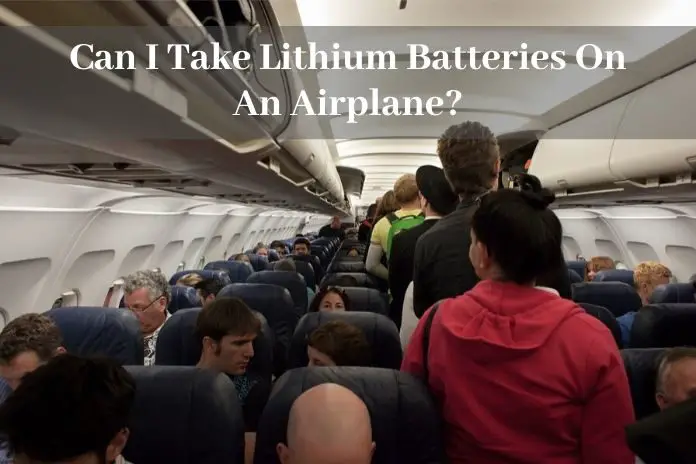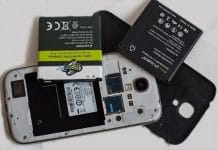
On one occasion or another, you will need to take a flight from one destination to another. When flying, you may need to carry all the electronics with you. It’s for this reason that people are always asking if they can take batteries on a airplane.
So, can you take a lithium battery on a airplane? Yes, you can bring lithium batteries on board, but there are limitations with how you pack them. For instance, lithium batteries with less than 100-watt hours, attached to a gadget, can be brought onboard on both carry-on and checked luggage. But, if the cells weigh more, you can only pack them in a carry-on baggage.
The FAA rules tend to be a bit complicated when it comes to dealing with lithium batteries. These rules can be a bit hectic based on the fact that these batteries are used in many devices. They are the cells used to power cellphones, as well as laptops. As said earlier, lithium batteries below 100-watt hours can be packed in carry-on luggage. Besides, the airline allows you to bring a spare lithium battery as long as it’s protected from shorting and damage.
Can You Also Bring Lithium Metal Batteries?
Well, much has been said about the standard lithium batteries. What many travelers don’t know are the FAA regulations about lithium metal batteries. Well, lithium metal batteries are allowed in carry-on bags. What is needed for these types of cells is that they should contain less than two grams or less lithium per battery.
As opposed to the standard lithium batteries, FAA regulations allow loose batteries of this kind in carry-on luggage, as long as the cells are protected from short circuits and damage. You can also bring on board a lithium metal battery in checked baggage as long as it’s fitted in the device. For in-checked luggage, you can’t bring loose metal batteries.
What About Dry Batteries?
Dry batteries are also another line of cells you have around. They include dry alkaline batteries such as AA, AAA, D, and C batteries. When taking a flight, you can pack these kind of cells in either of the luggage. Funny enough, there are no stated limits when it comes to bringing dry cells during your air travel.
In simpler terms, you can, therefore, pack as many dry cells as you want. But, you must remember that the FAA states that you can only bring onboard batteries you intend to use personally. Hence, a large quantity may raise an alarm that you are moving with the cells planning to sell. That means that you may trouble with customs as they can’t allow the items on either your carry-on or checked luggage.
Can You Bring Non-Spillable Wet Batteries on a Plane?
Non-spillable batteries are also commonly used, and this leaves many people asking if they are allowed in a flight or not. Well, the truth is that TSA will enable passengers to bring non-spillable wet cells on a plane, as well. As long as the battery in question doesn’t exceed 100-watt hours and 12 volts, you are set to go.
On top of that, you are permitted to carry with you two spares. They only need to be protected against damages and short-circuiting. It would be best if you used a secure packaging, marked ‘non-spillable’ on the outside. These lines of batteries are also allowed in checked luggage.
What About Spillable Batteries?
According to the TSA rules, you can’t bring a spillable battery during your flight, as they are restricted. However, the rules don’t affect the batteries used on a wheelchair.
Therefore, if you are traveling with one, you can have the guys perform the necessary inspections. For the wheelchairs with this kind of battery, it can remain attached to the attached as long as the mobile device remains upright during the flight.
Can You Carry Your Power Bank While Flying?
In the modern world, where you can hardly survive without a smartphone, it’s hard to travel without a power bank. A power bank acts as a suitable power source without needing to plug your phone into the wall. Well, the TSA rules don’t restrict power banks during air travel.
Can You Take a Phone Charger Onboard During Your Flight?
With the rules imposed on power banks, many people find themselves confused when it comes to a phone charger. A charger is a wire you attach to the wall outlet to recharge the phone. Don’t get it twisted, chargers are allowed on both hand luggage and even checked baggage. You can pack it in your cabin bag so that when your luggage gets lost, you won’t have trouble charging your phone at the end of the flight.
Are E-Cigarettes and Vape Allowed in a Plane?
For the smoke enthusiasts, there is always the worry of traveling with a vape or e-cigarette. Well, you can bring your vape on board in the carry-on luggage. However, it would help if you weren’t tempted to use the gadget while on air or even charge it. You can have it packed in your cabin luggage. These electronic cigarettes aren’t allowed in checked baggage even if you remove the battery.
Conclusion
Planning for air travel can be overwhelming. From booking the tickets to taking the flight itself, there are a lot of things you have got to observe. It’s recommended that you know what’s allowed on the plane and what’s not. Being on the know-how helps minimize the conflicts with airport security.
One question that new passengers are always asking is if the lithium batteries are allowed on the plane. As explained in this article, these types of cells are allowed as long as they follow the FAA rules. Read through this article to understand the laws that apply to other kinds of cells. By reading the entire article, you will make your flight smooth and fun.





